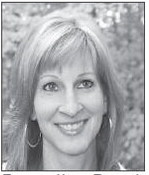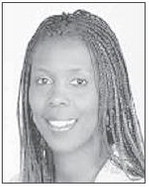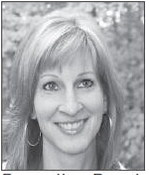The Blood Test


I’ve always been a rule follower, so when my doctor told me to head to the lab for blood work after my February checkup, I did. I dutifully rolled up my sleeve the following week and watched as the nurse filled six or seven vials with my dark red blood.
Nothing prepared me for the shock that came when I logged into the patient portal a week later. Me — the picture of health at 59, the threemile runner, the golden retriever walker, the processed-food avoider, the nonsmoker — had results that were “out of range.” I literally gasped when I saw the results.
First up: the lipid panel. My cholesterol had soared to 222, when most doctors prefer it to be under 200. My LDL was high, and my cholesterol/ HDL ratio was elevated. High cholesterol runs in my family, so I wasn’t too surprised that my genetics had decided to finally show up to the party. All those early morning walks through the woods and balanced, home-cooked meals couldn’t completely outsmart my DNA.
Then came the vitamin B12 deficiency. Among other things, this crucial nutrient helps keep nerve and blood cells healthy. Adults need about 2.4 micrograms daily, primar ily from animal products like meat, dairy and eggs. My levels were in the basement.
Next shocker: my white blood cell count was low. For someone who rarely gets sick, discovering my immune system’s frontline soldiers were MIA — missing in action — was unsettling. And if that wasn’t enough, my CMP panel revealed low protein levels, low alkaline phosphatase, and a high albumin/globulin ratio.
Google became my frenemy as I researched each result. Some findings were downright frightening, sending my imagination into overdrive.
When my doctor’s nurse called with the standard “eat better, exercise, take B12 supplements and retest in two months” prescription, I decided that wasn’t enough. I launched into detective mode, analyzing my diet and lifestyle with the intensity of a crime scene investigator.
The culprit? Despite eating eggs, nuts, yogurt, cheese and beans pretty regularly, my protein calculations revealed I was often not hitting the daily recommended target. More importantly, I learned about the importance of complete amino acids found in animal proteins — the building blocks our bodies desperately need. I’m a meat eater, but I’m more of a fruits-and-vegetables eater, and when given the choice between a bowl of chicken nuggets and a bowl of plump, sweet blueberries, I’m going to choose those blueberries every single time. My husband and I often just eat a big baked potato for dinner and call it a night. The test results suggested that I needed to up my meateating game.
Armed with this knowledge, I restructured my eating habits. More chicken, more fish, more lean meats joined my plate throughout the continued from page
day. I also faced a painful truth: my beloved Southern sweet tea had to go — sometimes. Water became my new best friend, and sugar became the ex I occasionally missed but knew was bad for me.
For over two months, I religiously took B12 supplements, packed my meals with protein, hydrated like an Olympic triathlete, and treated sugar like the fairweather friend it was.
The results? When I retested this week, most numbers had returned to normal ranges. My cholesterol dropped to 202 — still slightly elevated but heading in the right direction. Victory dance!
Here’s the kicker: I felt fine before the February blood test, and I feel fine now. However, in retrospect, there were signs something wasn’t right. My fingernails had gotten paper thin and were splitting all the time. They are finally showing improvement. And in the fall and winter, I noticed scrapes and sores were taking forever to heal — something I wrote off as old age. I’ve noticed an improvement there, too. The biggest difference is in the numbers — and the peace of mind they bring.
This experience has reaffirmed to me that we must each be proactive health advocates for ourselves. We get one body for this lifetime journey, and maintenance matters. Annual checkups aren’t just calendar fillers; they’re vital pit stops where trained professionals can help us spot issues before they become major problems.
Listen to what your doctor has to say, but also take charge. Do your own research. Drink water like it’s going out of style. Prioritize deep, restful sleep. Move your body daily. Nurture social connections. Think positive thoughts.
Quality and quantity of life are not mutually exclusive, and I want both. I plan to live a long life, and I want those years to be vibrant, active, and full of happiness and fun. Taking care of ourselves isn’t just about adding years to our lives; it’s about adding life to our years.






out of
Posted on